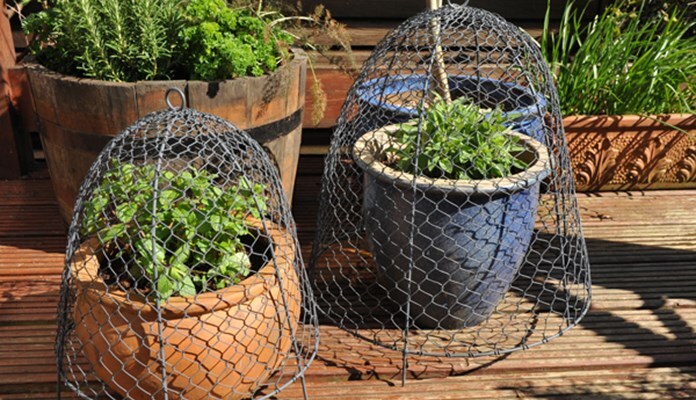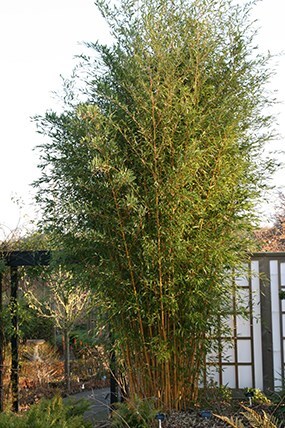Garden designs on a city garden

Creating an attractive and productive small city garden offers fresh challenges not experienced outside urban areas, but there are unique opportunities, too. How successful a small city garden turns out to be, will largely depend on how well the garden design tackles these issues.
Urban Challenges
The main drawbacks are obvious: noise, pollution and shade, as well as lack of space and privacy; but many urban gardeners also experience problems with pets, vandalism, even the quality of soil in their garden.
Coping with shade Dense shade cast by buildings is the main bugbear for many urban gardeners. Not only does it severely restrict the types of plants they can grow, but if continuous, it will limit the enjoyment of the garden. Fortunately, most gardens do get some direct sunlight for at least part of the day – especially in the summer months. This is a precious commodity and is a good place to start when designing an urban plot. Make the most of any sun-traps for seating areas and sun-loving plants. Then radiate out from that point, choosing plants for areas that receive at least some direct sunlight, and then the zones in permanent shadow. Bear in mind that light levels diminish in winter, so that even a sunny plot can be shrouded in continuous shade during the coldest months. Good plants for dry shade - which happens to be the most difficult to plant successfully - include shrubs, such as Aucuba, Choisya, Euonymus and Fatsia, with a back-drop of Garrya and variegated ivy, under-planted with a groundcover of Ajuga, Epimedium, Lamium and Liriope. There are many design solutions you can apply to shady areas to help lift the gloom. For example, planting shade-tolerant plants with light-reflecting, glossy leaves or white flowers that can transform a shady area. Or you can help make the most of available light by choosing pale-coloured paving and painting surrounding walls and fences a lighter shade. The introduction of mirrors laid horizontally, like pools of water to reflect the sky, or cunningly angled on vertical surfaces to reflect sunnier parts of the garden, will not only increase light levels dramatically, but will create the illusion of space – another precious commodity in an urban garden.

Improving soil conditions Many urban gardens suffer from soil problems. This can be because the soil is exhausted after many years of intensive cultivation, or because the garden is in the rain-shadow of nearby buildings and remains constantly dry. On newly built urban estates, the soil may have been damaged by heavy machinery or simply churned up bringing unfertile subsoil to the surface. The solution to all these problems is the same: namely, well-rotted organic matter. By incorporating lots of garden compost, leafmould or manure when you cultivate or plant, you will improve the fertility and moisture-holding capacity of the soil, as well as remedy any compaction problems caused by builders’ machinery. However, getting hold of well-rotted organic matter in urban areas is easier said than done, so it is worth checking out your local authority that may offer suitably composted material from recycling centres. Another option is to grow your own. Sowing green manures and then digging them into the soil before you plant up beds and borders, will add much-needed organic matter and nutrients. You can also give your plants a boost by adding a balanced general fertiliser, such as Growmore - both at planting time and as a top dressing around established specimens.
Preventing vandalism Some town and city gardens fall victim to vandalism and the increased concentration of pets in urban areas means these can be problematic, too. Cats, in particular, can be a nuisance, since they will seek out cultivated ground to scratch and disturb, which all too often is a neighbouring gardener’s seedbed or freshly planted border. You can protect vulnerable seedbeds from cats using netting or garden fleece, or by getting a cat of your own. If your front garden suffers from vandalism, you can plant vandal-resistant plants that are either tough enough, such as Buddleja, dogwood, hazel or Euonymus, to bounce back after some damage, or equipped with a vandal-deterrent, such with the spiny Berberis, Chaenomeles and Mahonia.

Urban Rewards
he main benefit of gardening within the metropolis is the range of different microclimates a small garden offers. With forethought, this allows even a beginner gardener to grow a much wider range of plants than would be possible out in the countryside. The very buildings that cast the dense shadows and funnel the damaging blasts of air also act like outdoor storage heaters, radiating heat at night and keeping temperatures up. That means that town and city gardens remain several degrees warmer at night throughout the year, with sheltered spots remaining frost-free even in severe winters. The buildings themselves can provide shelter from the most damaging icy winter gales, unless so configured to funnel the winds. So you need to look at an urban garden carefully before deciding what to plant where.
Designing a city garden Before designing a new urban garden, you need to establish where the different microclimates occur; which parts are sheltered and which are buffeted by winds. On a frosty morning, note down on a simple plan of your garden the areas that get frosted and those that don’t. Do this before the sun is on the garden to get the most accurate picture. Also highlight the areas of the garden bathed in sunshine for most of the day and the areas that are in continuous shadow. You can test for wind by positioning a wind-chime at various points around the garden. Passageways between buildings are notorious for damaging eddies and wind currents, but you may find there are unexpected exposed spots, as well as areas offering more shelter all around the garden. Against sheltered walls and fences, you will be able to grow some plants that are too tender to grow in gardens elsewhere. ‘Frost hardy’ plants that can tolerate temperatures down to -5oC can be used in most parts of a town or city garden, while in reasonably sheltered spots, you should be able to grow ‘Half-hardy’ plants successfully because they can cope with temperatures as low as 0oC. In the most sheltered areas, ‘Tender’ plants can be tried, but you may have to protect them with garden fleece if very cold night-time temperatures are forecast.
